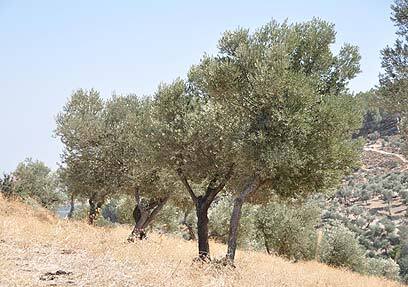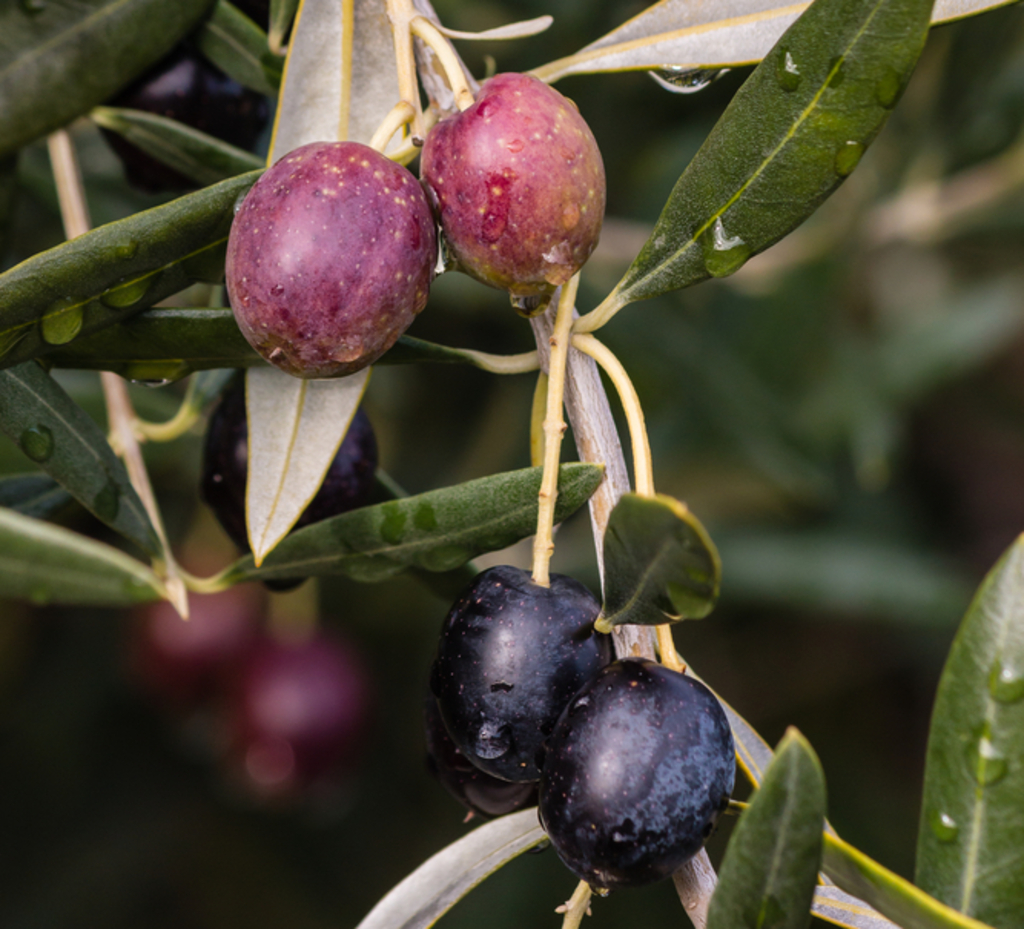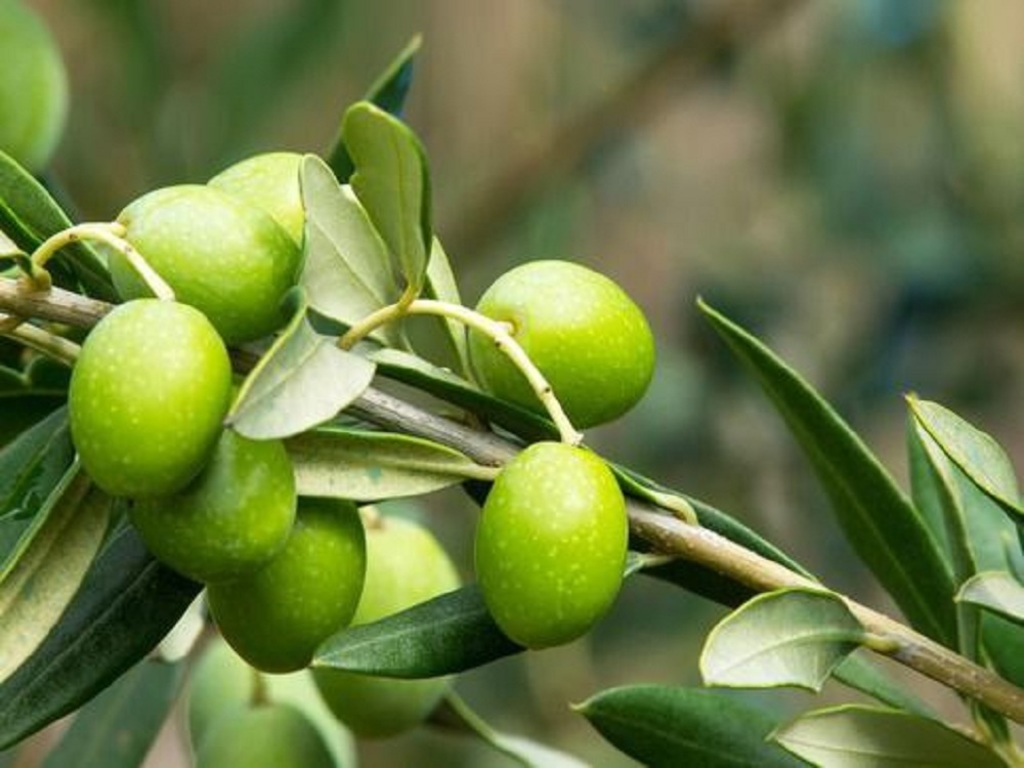Getting your Trinity Audio player ready...
It is hard to imagine the Israeli landscape without olive trees. In fact, Israel including the rest of the Levant is the region where olive trees were first domesticated 7,000 years ago.
Local olives are well adapted to the climatic conditions of the Mediterranean Basin. However, an increase in droughts in the region accelerated by the climate crisis has begun to take its toll on one of the most popular Israeli staple crops.
Different types of olives vary as to how they are affected by water shortage. A new Israeli study that is expected to be published soon examines why this phenomenon occurs.
"Olive trees are very resistant to drought conditions," says Dr. Uri Hochberg of the Institute of Soil, Water and Environmental Sciences at the Agricultural Research Organization, Volcani Center, a co-author of the study.
"According to what we measured in olives grown at the Volcani Center, they are able to absorb water from the ground even at the tremendous pressure of 80 atmospheres (a unit of pressure)," he says.
Such strength is equivalent to pumping water to a height of 800 meters and allows the trees to draw water from even the driest of soils.
"By comparison, vegetables reach a pressure of only 10 atmospheres, while fruit trees pull water from the ground with no more than 30-40 atmospheres," says Hochberg.
The sensitive olive and the indifferent olive
The new study, led by student Oded Barzilai, examined two common olive varieties: The Syrian olive and the Barnea olive. The Syrian olive, which is the most common olive in Israel, is a traditional variety that has been grown in the region for many generations.
The Syrian olive tree is usually grown in plantations (i.e., its only source of water is rainwater). Its fruits produce high-quality oil but are also processed as table olives intended to be consumed as food.
Barnea is a modern variety developed in the 1970s at the Volcani Center, and is an irrigated crop (i.e., it regularly receives water), and is used exclusively for oil production.
Previous studies have found that the two varieties respond differently to irrigation: The Barnea blooms and thrives when well-watered, but does not grow when receiving too little water.
The Syrian olive is relatively "indifferent" to irrigation, and functions to a similar extent, whether it is irrigated or not – hence it is also less affected by water shortage.
The objective of the new study was to examine the causes and implications of different properties of those two varieties.
"We wanted to see what the Syrian is paying for being more resistant to water stress," Hochberg says. "Nature is composed of systems of interactions, and when you gain something, you usually lose something."
Small, but economical
The researchers found that, like humans, the different olive varieties differ in "character."
The Syrian is a frugal and solid variety, which absorbs less water from the soil, even when there is plenty to go around. This is also reflected in the extent to which the Syrian olive opens its stomata, which are tiny pores on the leaf surface responsible for gas exchange, such as carbon dioxide.
The plant uses carbon dioxide during photosynthesis and is, therefore, essential for the plant's growth and survival. However, the side effect of this gas exchange is the exposure of the inside of the leaf, in which the percentage of moisture is high, to the drier external environment, causing water loss to the atmosphere.
The Syrian variety opens its stomata less than the Barnea, and therefore loses less water - but at the same time, the tree is smaller and bears fewer fruits.
According to Hochberg, such a mechanism for coping with stress or strain is well known, even outside the plant world. "
This can also be observed in people who, for instance, had to deal with a lot of stress or traumatic conditions as children, and as a result, remained physically small," he says. "You can see it in our grandparents' generation, for example."
Barnea, on the other hand, is more "wasteful." It draws greater amounts of water from the soil and opens its stomata more than the Syrian variety. Therefore, it can grow bigger and bear more fruit.
Also, according to the study, the xylem (the tissue that transports water through a plant) of the Barnea is larger and can hold more water. However, during times of hardship, the Barnea's xylem has difficulties supplying the entire tree with enough water. As a result, the Barnea suffers more in dry conditions and loses crops on a larger scale than the Syrian olive.
Preserving local varieties
With the intensification of the climate crisis in recent years, olive trees have to deal with water shortages more frequently.
"Declining water availability, and the fact that rainfall events are becoming increasingly scarce, are greatly affecting the olives," says Dr. Arnon Dag of the Gilat Research Center at the Volcani Center, a co-author of the study.
According to Dag, Israeli olive plantations, which spread across no less than 250,000 dunams (roughly 62.000 acres) of land and constitute the primary method of growing olives in Israel, are greatly affected by that problem.
"In recent years, we've seen very severe damage to the olive plantations in the Galilee region in the north of the country, where most of the countries olives trees are grown," he says.
In order to minimize the damage caused by water shortages in olive plantations, farmers can, for instance, perform intensive pruning. Another way is to simply grow different olive varieties.
"It is entirely possible, in local olive plantations, to place a stronger emphasis on varieties that are more resistant to drought," says Dag. "The Syrian is the main variety in Israel, and it will probably become more and more established."
According to Dag, the study illustrates the importance of preserving local olive varieties, such as the Syrian olive, grown and refined in the region for thousands of years.
"There is now a massive loss of ancient olive populations in Israel due to urbanization, fires in areas that are not properly cultivated, and uprooting of plantations in order to shift to other crops," he says.
"In the 1930s, we grew 30 local varieties here in Israel. Today, it's only two or three. Olives are part of our culture and heritage, and it is important to preserve local varieties so that they will be here for decades to come."
Reprinted with permission from ZAVIT* Environment and Science News Agency




